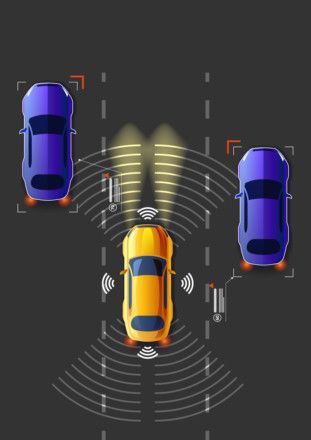Not so long ago, the idea of self-driving or autonomous cars was wishful thinking, more likely to be seen in a science fiction movie than on the roads.
With technology rapidly improving, highways with autonomous vehicles transporting their passengers to and from destinations with ordered efficiency is no longer an outlandish thought. The question is no longer whether, but when, all-road vehicles become fully autonomous.
This pace of autonomous vehicle development is breathtaking with pilot projects being conducted in several countries. The UAE leads the way with this revolution with learning from its successful implementation of driverless trains and its initiative on flying taxis. Recently, at Gitex, we were witness to demonstrations of autonomous transportation and connected car technologies.
AutoX, a self-driving car start-up from Hong Kong, is collaborating with UAE companies to develop a “Robotaxi” — a cab without a cabbie that could be on Dubai’s roads as early as 2020.
We also saw some of the latest examples of this burgeoning sector, with UAE-based W Motors’ company unveiling their fully electric MUSE car. It is described as a Level 4/Level 5 autonomous driving system. In other words, the car has the potential to be driven without any interaction from the human occupant. It will be fully produced in Dubai and the aim is for it to hit the roads for Expo 2020 Dubai.
Hands on direction
This momentum is being guided by governments that are increasingly getting on-board with autonomous technology and the promise it brings. The recently introduced Dubai Autonomous Transportation Strategy, for example, is expected to boost annual economic revenues by Dh22 billion by reducing transportation costs, carbon emissions and accidents, and saving hundreds of millions of hours wasted in conventional transportation.
The Roads and Transport Authority (RTA) has already tested driverless shuttle buses and indeed their goal is for 25 per cent of all trips to be made with self-driving transport by 2030.
Data loading
This future is closer than ever, but there are still some hurdles that must be crossed before it can become a reality. Chief among these is the huge increase in demand for data storage these vehicles will and do need. As the intelligence of cars increases, so does the need for data storage.
This data covers everything from entertainment and navigation to on-board sensor systems.
For a vehicle to operate autonomously it requires a host of technologies, previously only seen on high-end cars, to work seamlessly together. These include dashboard cameras, digital clusters, vehicle-to-everything (V2X) communications, safety sensors for Advanced Driver-Assistance Systems (ADAS), and Artificial Intelligence. All this technology and innovation requires data, while modern cars hungrily consume large amounts of data storage.
Not for the cloud alone
While the cloud would seem like an alternative, this would not be enough. Even with the high speeds promised by 5G, the problem of latency remains, especially regarding real-time decision making. Although good in theory, the cloud might run into problems with slow network speeds or spotty connections.
Instead the solution is more likely to come from devices such as flash drives that can store and manage data produced by the on-board electronics of modern cars. This type of memory is finding its way into devices known as micro-controllers, small systems that act as highly specialised small computers. They are each given specific tasks to carry out in automotive systems such as infotainment, telematics and transmission, for example.
Flash memory is being adopted rapidly in vehicles with some experts claiming that the amount of this memory in a car, which is already approaching a terabyte, could double in capacity every two years. With 0.75 GB of data generated per second, the data infrastructure for self-driving vehicles has to be resilient.
If you think about it, nearly 1GB of data produced each second translates to nearly 4TB of data per hour. This super-fast memory is essential for assisting in moving, analysing and processing data to the car’s on-board computers allowing for real-time decision making.
As complex as that sounds there are further challenges data storage faces. Memory requirements can also vary drastically depending on what it will be used for.
For example, specific applications in the car will require data to operate under extreme temperature conditions. A car’s interface and safety features need to be fully functional even if you park it under the midsummer heat of Dubai.
Alternatively, some data in the car is only kept for a few seconds, while others must be retained for days, months or even years. It is an intricate web of needs and requirements that must be balanced perfectly in-order for a self-driving car to operate safely, efficiently and reliably.
Keeping pace
There is little debate that artificial intelligence will play an increasingly central role in the cars and other vehicles we will see on the roads in the coming years. As it continues to evolve with more sophisticated features, it will push other technologies to ketchup with faster processing on-board computers and more sensitive sensors.
This will require greater amounts of data to be stored and moved to where it is needed to allow these systems to make more reliable and accurate real-time decisions. It is vital that storage systems, no matter how they develop, are flexible enough to meet these challenges head-on and deliver on the promise that autonomous cars offer. Through technologies like flash, some of the hurdles facing this exciting future can be overcome, but it will require continued innovation and a focus from all sides.
How best we integrate these different technologies in a way that helps self-driving cars meet their potential is the challenge the industry is striving to solve in new and interesting ways.
Khwaja Saifuddin is Senior Sales Director for Middle East and South Asia at Western Digital.













